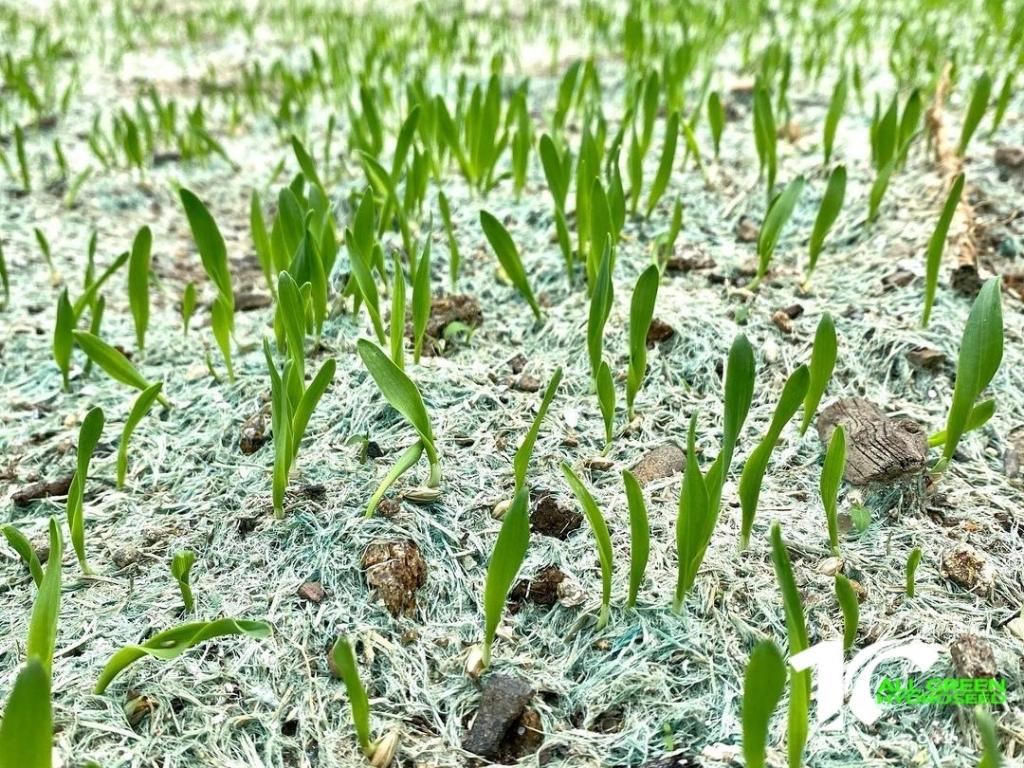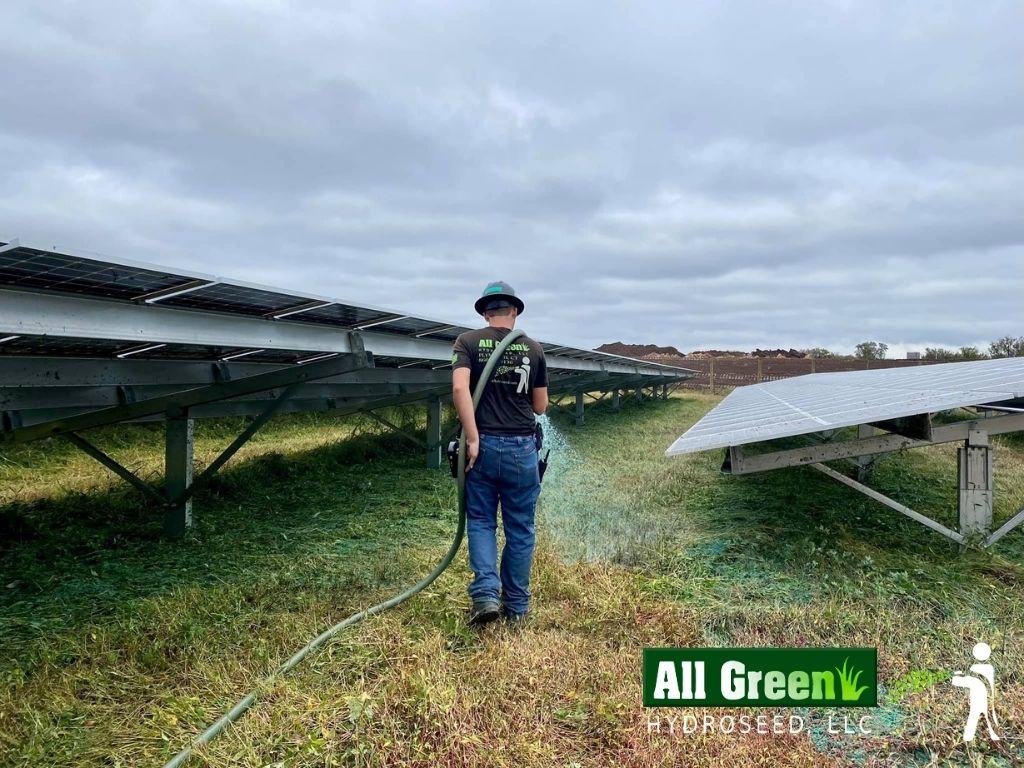When it comes to landscaping and lawn care, timing is crucial. Choosing the perfect time to hydroseed your beautiful lawn can make a significant difference in the success of your project.
Hydroseeding is a popular method for establishing a lush, green lawn. It involves spraying a mixture of seeds, water, fertilizer, and mulch onto the soil. The timing of this process plays a pivotal role in determining its effectiveness.
This article looks into when it’s good to hydroseed, what factors you should think about, and the good and bad sides of doing it in winter.
When Is The Best Time To Hydroseed?
Determining the best time to hydroseed largely depends on your geographical location and climate. However, there are some general guidelines to consider:
Spring
Spring is widely regarded as one of the best times to hydroseed in most regions. This season offers several key benefits:
Spring provides moderate temperatures that are conducive to seed germination and growth. These conditions are ideal for many grass varieties.
Spring often brings consistent rainfall, ensuring that newly hydroseeded areas receive the necessary moisture for successful establishment.
The combination of warmth and moisture accelerates the grass’s growth, resulting in a quicker and more vibrant new lawn.
Early Fall
Early fall is another highly favorable time for hydroseeding, and here’s why:
As summer transitions into fall, temperatures become cooler. This is advantageous because cooler weather reduces stress on newly germinated seedlings and encourages healthy root development.
Weeds tend to slow down their growth in the fall, providing your grass seedlings with a competitive advantage.
Late Summer
Late summer can be a suitable time for hydroseeding in certain areas, but it comes with some considerations:
Late summer can be dry in some regions, so ensuring consistent soil moisture is crucial for successful hydroseeding during this period.
Hydroseeding in late summer allows your grass to establish itself before the onset of winter. This can be particularly beneficial in areas with milder winters.
The best time of hydroseeding your beautiful lawn depends on your local climate and specific circumstances. By considering these factors and assessing your local climate, you can make an informed decision about the ideal time to undertake your hydroseeding project for a lush and healthy lawn.
Factors To Consider When Hydroseeding
When embarking on a hydroseeding project, it’s crucial to consider various factors to ensure successful results.
Local Climate
The local climate is a crucial factor to consider when planning a hydroseeding endeavor. Extreme temperatures, whether scorching hot or bitterly cold, can put undue stress on newly hydroseeded lawns, impacting their development.
Conducting a thorough soil test is also imperative to prepare the soil adequately for hydroseeding. Understanding your soil’s composition and fertility levels can optimize conditions for successful seed germination and growth.
Moreover, it’s essential to synchronize your hydroseeding schedule with your region’s precipitation patterns. Choosing a time when there’s sufficient moisture in the air can significantly aid in seed establishment and initial growth.
It is crucial to be mindful of the last spring frost date and the first fall frost date. Hydroseeding too early in the spring or too late in the fall could leave your grass vulnerable to potential frost damage, impeding its progress.
Soil Temperature
Soil temperature plays a vital role in the success of your hydroseeding endeavor, influencing seed germination rates and overall project outcomes. It’s ideal to target soil temperatures ranging from 50°F to 65°F (10°C to 18°C) for optimal results.
Grass varieties tend to germinate and establish more efficiently within this temperature range. Utilizing a soil thermometer to gauge the temperature at the desired seeding depth is recommended.
This enables you to assess whether conditions are conducive to hydroseeding while considering critical factors such as soil erosion risk, soil test results, and the establishment of a deep root system for new grass growth.
Water Availability
Consistent water supply is essential for the success of your hydroseeding project. Newly hydroseeded areas require frequent and consistent watering to keep the soil consistently moist during the germination and establishment phases.
Consider installing an irrigation system or using sprinklers to ensure even and adequate water distribution across the seeded area.
In regions prone to drought, it may be necessary to delay hydroseeding until a more favorable time with better water availability. The best time to hydroseed your new lawn is determined by a combination of factors, including your local climate, soil temperature, and water availability.
By carefully assessing these considerations, you can plan your hydroseeding project to achieve a healthy and thriving green lawn.
Can You Hydroseed In The Winter?
Although hydroseeding is commonly done in spring or early fall, many homeowners wonder if it’s viable during winter. Deciding to hydroseed in winter demands careful thought, considering the specific conditions and obstacles this season presents.
By evaluating these factors, including prepared soil, soil test results, the state of existing grass, and the potential for a successful hydroseeded lawn, you can determine whether winter hydroseeding aligns with your landscaping goals.
Pros Of Hydroseeding During Winter
Hydroseeding during winter may not be the conventional choice, but it offers several advantages worth considering. Here are the pros of hydroseeding during winter, shedding light on why some homeowners opt for this approach.
Reduced Weed Competition
One notable benefit of winter hydroseeding is the reduced competition from weeds. Winter conditions, characterized by colder temperatures and shorter daylight hours, naturally deter weed growth. This means that your grass seedlings have a head start, facing less competition from unwanted plants.
As a result, your newly seeded lawn has a better chance of thriving without the need for excessive weed control measures.
Lower Maintenance
Another advantage of hydroseeding during the winter is the reduced maintenance workload. Unlike spring or summer, when lawns require frequent mowing and trimming, winter hydroseeded areas remain relatively dormant.
This means you won’t need to invest time and effort into regular lawn maintenance tasks during the colder months, allowing you to focus on other aspects of your landscaping.
Extended Establishment Time
Winter hydroseeding provides a unique opportunity for an extended establishment period. With cooler temperatures slowing down the grass’s growth rate, your lawn has more time to establish strong root systems before the active growing season begins in the spring. This extended timeframe can result in a more robust and resilient lawn once warmer weather arrives.
While hydroseeding during winter may come with its set of challenges, the reduced weed competition, lower maintenance requirements, and extended establishment time make it a viable option for those looking to get a jumpstart on their new lawn’s health and appearance.
It’s essential to weigh these advantages against the potential drawbacks to determine if winter hydroseeding aligns with your landscaping goals.
Cons Of Hydroseeding During Winter
While winter hydroseeding can have its merits, it’s also essential to consider the potential disadvantages. In this section, we’ll delve into the cons of hydroseeding during the colder months, helping you decide whether it’s the right choice for your existing lawn.
Risk of Frost
One significant drawback of winter hydroseeding is the risk of frost damage to young seedlings, particularly in areas with harsh winters. Sudden drops in temperature and frosty conditions can harm the delicate grass shoots, potentially leading to poor germination and survival rates.
Protecting the seeded area from frost becomes a critical challenge when opting for winter hydroseeding.
Slower Germination
Colder temperatures in winter can significantly slow down the germination process. Unlike the warmer seasons where grass seedlings sprout relatively quickly, the slower germination in winter means it may take longer for your lawn to establish itself.
Patience and careful monitoring are essential when choosing this season for hydroseeding.
Increased Watering
Maintaining adequate soil moisture can be challenging in the winter. The ground may freeze or dry out more slowly, making it necessary to invest more effort and resources in proper watering techniques.
Ensuring consistent soil moisture levels becomes paramount for the success of your winter hydroseeding project.
While winter hydroseeding has its share of potential drawbacks, such as frost risk, slower germination, and increased watering demands, it can still be a viable option for certain situations.
Assessing these disadvantages against the advantages will help you determine if the unique benefits of winter hydroseeding align with your landscaping goals and local climate conditions.
The Bottom Line
In determining the best time to hydroseed, it’s essential to consider your local climate, soil temperature, and water availability.
While spring and early fall are often the preferred times for hydroseeding due to favorable conditions, hydroseeding during the winter is possible, with both advantages and disadvantages.
Ultimately, the best time depends on your circumstances and priorities. So, before you start your hydroseeding project, carefully weigh the pros and cons to achieve the best results for your new lawn.
Don’t wait any longer to achieve the beautiful, healthy lawn you’ve always wanted. Contact All Green Hydroseed today to schedule a consultation and start your journey to a greener, more vibrant landscape.



